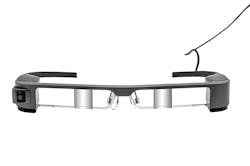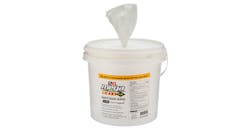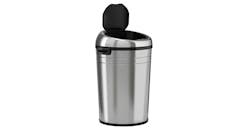By the amount of coughing and wheezing heard in the checkout line, days your kids missed from school, and crusty mucus caked on your sleeve, you could already probably tell this is a banner year for the influenza virus. CDC metrics back this anecdotal evidence, with the current number of hospitalizations stemming from the flu matching the same period of the 2014-2015 winter.
"This year's flu season is on pace to be similar, if not worse," says Andrew Challenger, Vice President of global outplacement consultancy Challenger, Gray & Christmas Inc. "Employers should prepare to see a number of absences in the coming weeks."
And the flu, which thrives in cold, dry environments, is expected to hang around for three more months.
The millions of sick days taken means nationwide production numbers will also take a hit. Using the average hourly wage ($26.63) and expecting four missed shifts per infected worker, Challenger's job consultant firm calculates employers could lose up to $9.4 billion.
Luckily, these Koosh-ball looking microbes can be outsmarted, or at least suppressed, with some pretty easy, inexpensive tactics.
1. Vaccinate
The CDC says after a flu vaccination it takes about two week for your body to develop anti-bodies. With flu season sometimes lasting until May, anytime during the winter is the best time to get one. And while the shot is not a guarantee you won’t get the flu, last year it did work 48% of the time, the CDC reports.
2. Stay Home
This really couldn't be any easier to do. Instead of getting in your car and driving to your job, don't.
"While sick workers may think they are doing the right thing by 'toughing it out' and coming into work when they feel ill, they are only likely to spread their illness, potentially further interrupting optimum business operations," Challenger says. "Whether it is motivated by job security or a desire to continue making a contribution in an overburdened workplace, presenteeism, as it has come to be called, should be strongly discouraged by employers."
And even when you start feeling better, remember the virus remains contagious for seven days.
3. Have a Back-Up
So your loyal maintenance technician, not wanting to infect anyone, stays home like advised, but there's a quarterly PM on mission-critical machinery due. Now when he gets back, your production schedule is thrown off because of an unplanned equipment shutdown. This issue could be prevented by creating some redundancy in your MRO program and training more than one person for critical tasks.
"One way to prepare is to make sure managers train staff on all responsibilities necessary to the functioning of the department in the event of team members' absences," Challenger says. "This will not only help prevent any lapses in work to customers and clients, but will also give employees the opportunity to increase their skill sets."
4. Set Up a Telecommuting Plan
Staying home and getting your work done do not have to be mutually exclusive. You can get plenty accomplished online checking up on all your Internet of Things connected machinery, and setting up a Skype call for any face-to-face meetings. (By the way, abstaining from face-to face meetings in general is discouraged during flu season; someone's likely to be contagious.)
We aren't quite at the point where you can put on a VR headset and whoosh, you're instantly transported to a digital twin of your factory, where you can be an "all-seeing eye" from your home in Mordor or generic housing development. But if you're under the weather, you can have a healthy employee put on a pair of smart glasses and stream the live video to your laptop. The Moverio BT-300 smartglasses can be had for $700 and pair with Atheer AiR for "see-what-I see" capabilities, along with task guidance and training functionality.
5. Keep Wipes Handy
Not to freak you out, but this time of year, anytime you touch an object in a public space, you could come into contact with flu spores. As long as you keep your hands clean, you should be OK. On the factory floor, you should have a large tub of wipes that doesn't require opening a lid, which is just one more hideout for the microorganisms. There are 2,300 germ-killing wipes in 2XL's Mega Roll Recyclable Sanitizing Wipes, which can also be used on non-porous surfaces, such as door handles workbenches. The dispensing system works like a cubed tissue paper box: just pull and go. And the biodegradable wipes are free of alcohol. Alcohol dries your hands out and makes you look older, noted beauty expert Patrick Bateman says.
6. Trash Pick-Up
What good is a sanitized wipe if you open a contaminated-garbage can to throw it away? In areas where you need a covered can, touchless receptacles are the best hygienic option. The iTouchless 18-Gallon Commercial Stainless Steel Garbage Can (now 35% off) is great for any high-traffic area and has casters to make it easier to move.
7. Mask Your Flu Intentions
Unless you're a doctor in surgery or Michael Jackson, you just look stupid wearing a disposable facemask. But you know your co-workers. Do you really think they'll all comply with any of these flu-prevention techniques? According to Curad, its Antiviral Facemask "inactivates 99.99% of tested strains of influenza viruses on five minutes contact with the surface of the facemask in laboratory (in-vitro) tests against the following seasonal, pandemic, avian, swine, and equine influenza viruses."
Most importantly, this fashion statement tell coworkers "I'm too important to get sick and I don't trust you."
8. Mist-er Manager
We mentioned before that this virus loves cold and dry environments. Simply make your workplace uninviting by installing a humidifier, which studies suggest kills the flu. The 1.5 GPH-capacity SmartFog ES100-1 humidifier is easy to install, nearly maintenance-free and eliminates mold, bacteria and viruses.
About the author: John Hitch, a staff writer at New Equipment Digest, is from Cleveland, Ohio, where he writes about manufacturing technology and trends.








